Loggerhead turtles washed up on UK shores, released back into warmer waters
Take a look at these turtles!
- Published
It's not always plain sailing for turtles living in the sea, as they are affected by weather conditions and can sometimes end up a very long way away from home.
That's what happened to six loggerhead turtles that were found washed up on UK shores.
Aquariums have spent around two years nursing them back to health.
Now thanks to a helping hand, or flipper, from the crew of a Royal Navy patrol ship, they've been released back into the wild.
More 'turtley' awesome news
Conservation means Cyprus turtles are thriving
- Published1 October 2023
Meet the injured sea turtle given a third chance at life
- Published17 September 2024
Say hello to Fluffy, the snapping turtle found in the UK
- Published10 February 2024
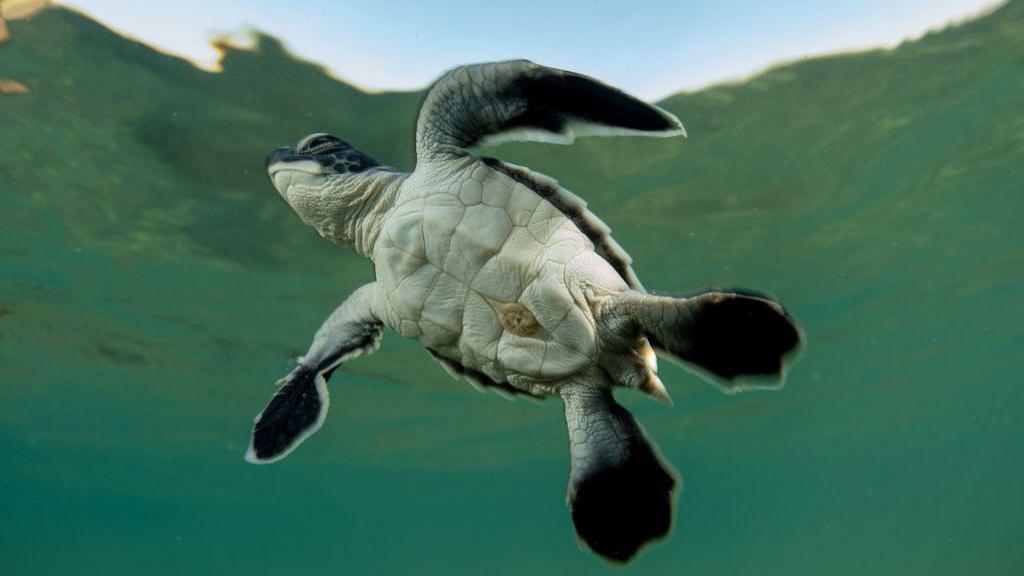
Where were the loggerhead turtles found?
Four of the turtles, named Jason, Perran, Gordon and Hayle were found in Cornwall. Holly was found in Devon, and Tonni was rescued in Anglesey.
They were released back into the warmer waters around the Azores - a group of islands in the North Atlantic Ocean - after having been cared for by Newquay's Blue Reef Aquarium and Anglesey Sea Zoo.
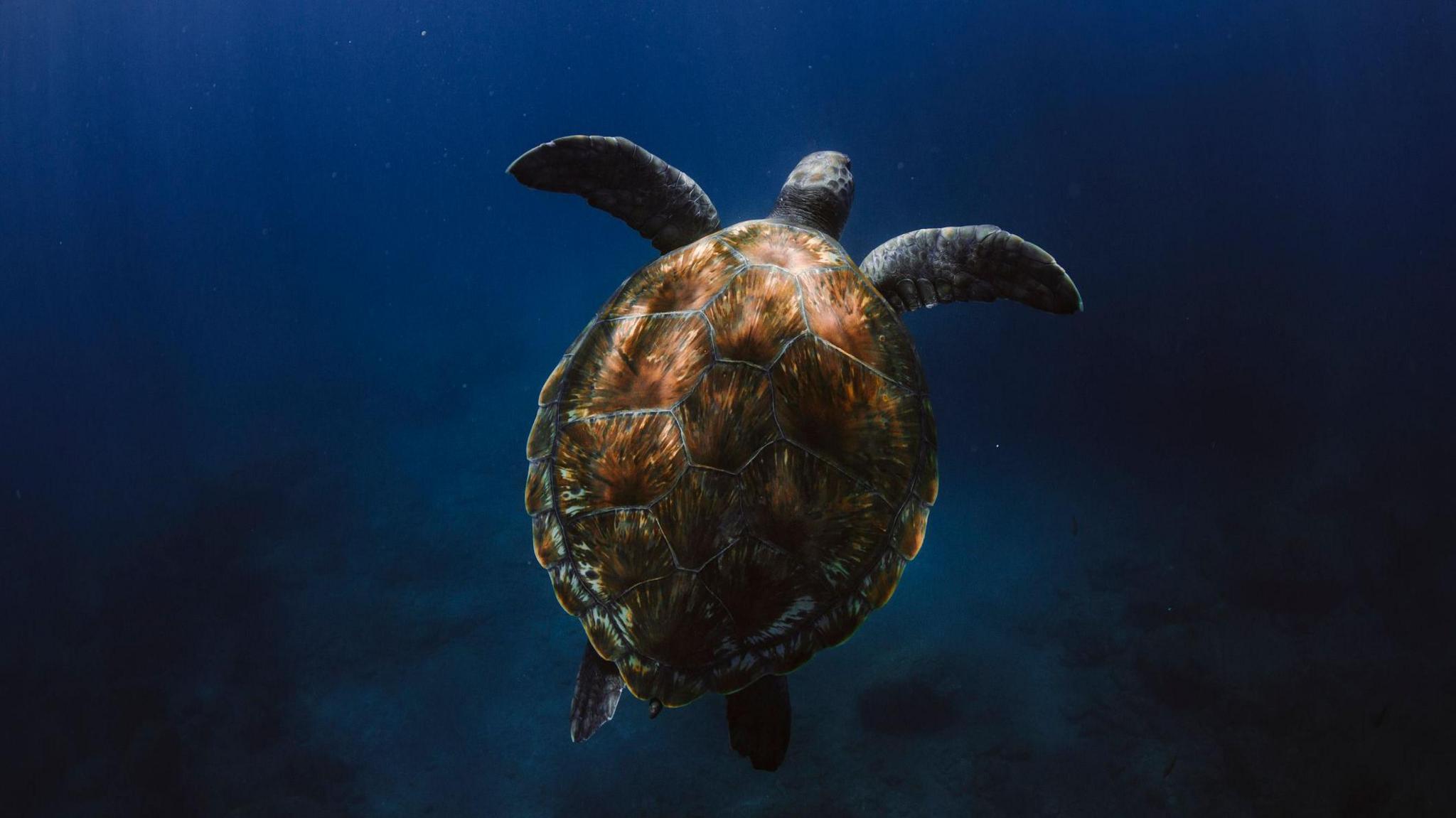
How did the turtles get to the UK?
The young turtles were swept thousands of miles from the Caribbean or east coast of the USA by strong winds and strong Atlantic sea currents. They then became 'cold-stunned' in the waters around the UK.
This is a condition in which sea turtles become very weak from being in cold temperatures.
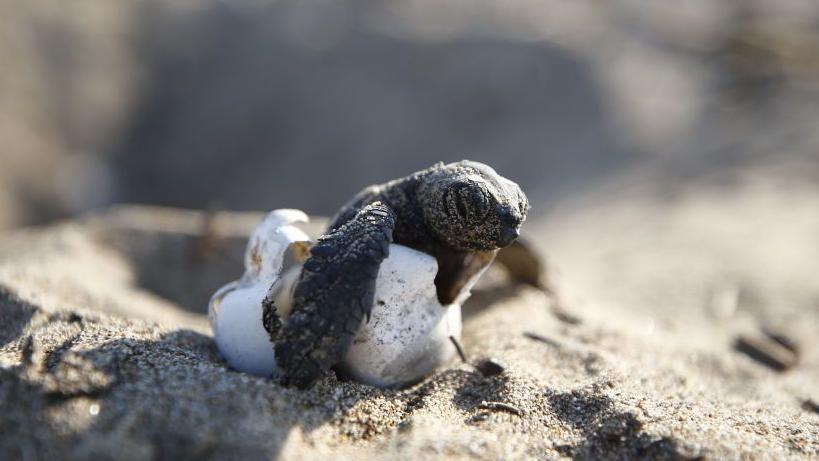
Turtles hatch on the beach
How many loggerhead turtles are in the wild?
According to the Center for Biological Diversity, the current total estimate of loggerhead sea turtles is around 50,000, whereas the species once numbered several million throughout the world's oceans.
They are currently listed as a vulnerable species internationally, which means they are at a high risk of becoming extinct in the wild.
Climate change, hunting and getting caught in fishing equipment are some of the main threats the turtles face.
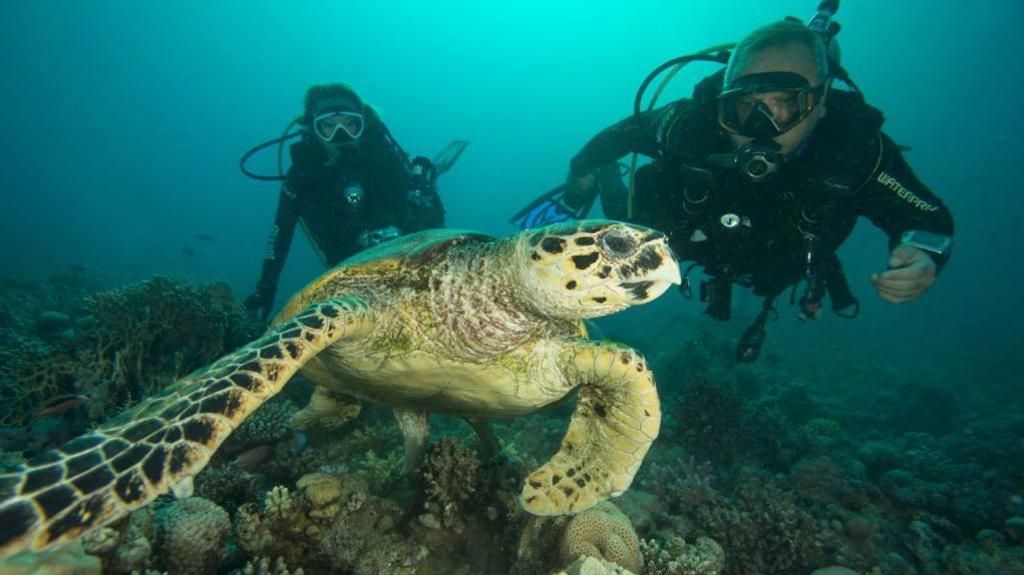
What's their usual habitat?
Loggerheads are the most common turtle in the Mediterranean, where they nest on beaches.
They are found in the Atlantic, Pacific, and Indian Oceans, and in the Mediterranean Sea.
They like to feed in coastal bays and in enclosed coastal areas called estuaries. They mainly eat shellfish.
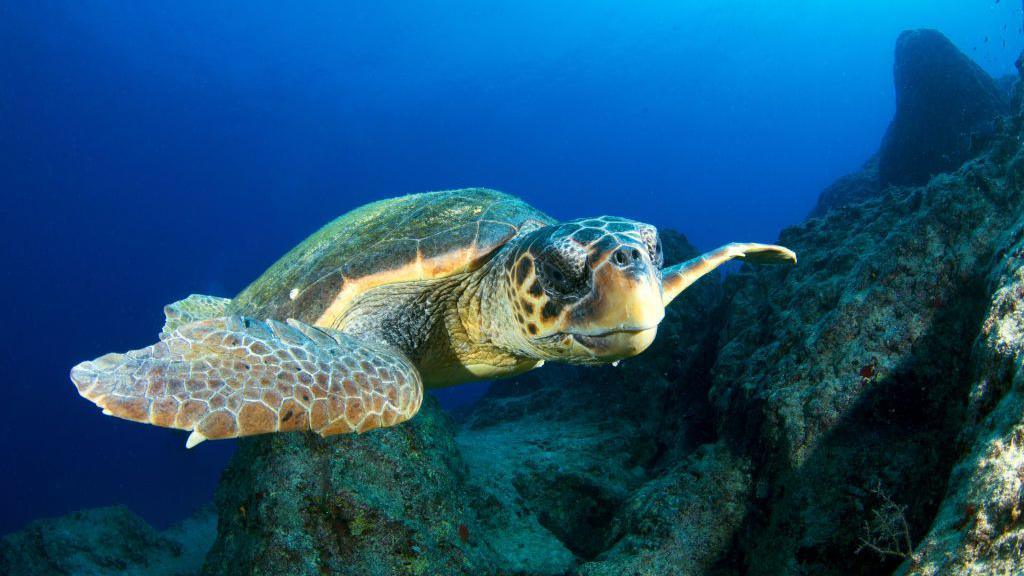
How long do they live?
These turtles have a long life span and can live from 50 to 80 years - or older.
Tips for if you find a stranded sea turtle
Do not attempt to return them to sea
Wrap them in a towel soaked in seawater without covering nostrils
Put it in a secure place on its belly and do not attempt to warm it up
If inactive, raise the back end of its shell to rest it at a 30 degree angle so its lungs can drain
Blue Reef Aquarium
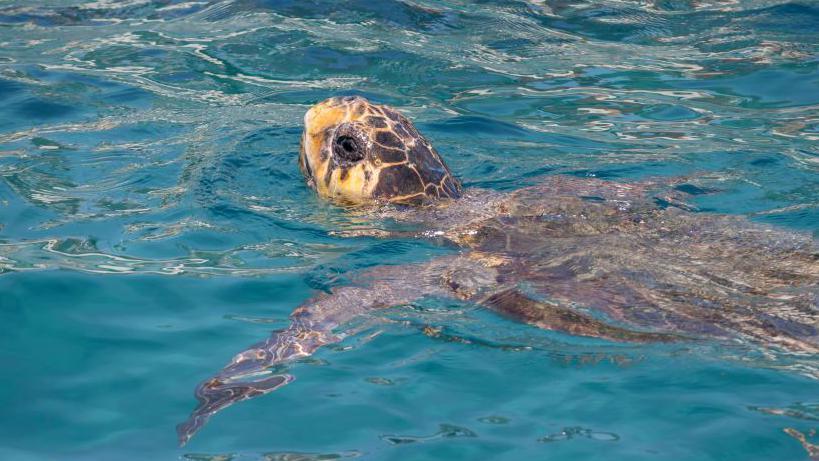
The turtles travel thousands of miles to nest
How far can they travel?
Loggerhead turtles migrate huge distances between finding food and going to lay their eggs.
Every two or three years, a female turtle may travel over 7456 miles (12,000km) to return to the beach where she hatched decades before.
Male turtles don't leave the ocean once they've entered it, but females come out to lay their eggs on sandy beaches during nesting season.
They can lay between 65 and 180 eggs at a time
More amazing animal stories
- Published27 September 2024

- Published26 September 2024

- Published9 September 2024

